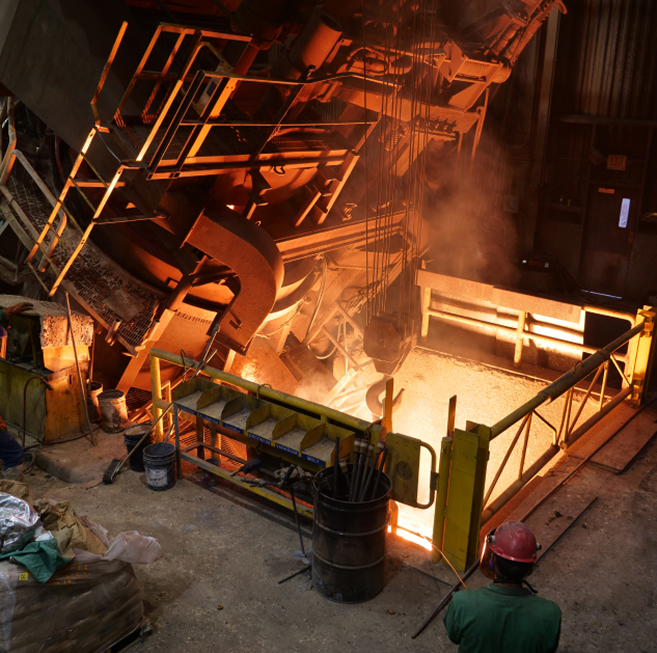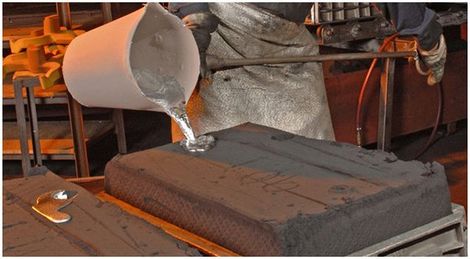How a Metal Foundry Combines Science and Skill
Wiki Article
Comprehending Metal Casting Procedures: Developments and Trends in the Foundry Sector
The foundry market is experiencing considerable improvements driven by technological innovations. Advancements such as 3D printing and man-made knowledge are reshaping metal casting procedures, improving performance and precision. Lasting methods are gaining grip, highlighting the relevance of environmental obligation. On top of that, the intro of sophisticated materials and automation is improving total casting high quality. These developments suggest a crucial change in the market, questioning regarding future directions and effects for manufacturers.Improvements in 3D Printing for Metal Casting
Recent improvements in 3D printing modern technology have actually significantly changed the landscape of steel casting. The assimilation of additive production techniques has allowed the fast production of complex patterns and mold and mildews that were formerly difficult or impossible to accomplish with conventional approaches. By using products such as sand and metal powders, manufacturers can develop complex geometries that boost design versatility and reduce material waste. This advancement not just accelerates the prototyping procedure yet likewise enables the customization of parts tailored to particular applications.
Additionally, 3D printing promotes shorter lead times, which is vital in industries calling for quick turnaround for parts. The technology also supports the production of light-weight structures, thus boosting power performance in end products. Consequently, the foundry sector is experiencing a change in the direction of more lasting methods, driven by the performance and precision used by these contemporary 3D printing strategies in steel casting procedures.
The Function of Expert System in Precision Production
As markets increasingly embrace advanced manufacturing innovations, expert system (AI) is playing a crucial function in improving precision manufacturing procedures. AI algorithms evaluate substantial datasets to recognize patterns and maximize manufacturing specifications, leading to boosted precision and efficiency. In steel casting, AI aids in anticipating maintenance, decreasing downtime by forecasting equipment failures prior to they happen.AI-driven simulations make it possible for producers to design the casting procedure, refining layouts and minimizing flaws. Machine understanding methods boost quality assurance by finding anomalies in real-time, consequently ensuring that only items meeting stringent specs proceed via the assembly line.

Sustainable Practices in the Foundry Market
Sustainability has actually arised as an important focus in the foundry market, motivating manufacturers to take on techniques that minimize ecological influence while keeping performance - Metal Casting. One prominent strategy includes the recycling of products, especially steels, which significantly decreases waste and power consumption. Factories are significantly carrying out closed-loop systems, enabling the reuse of sand and various other casting materials, consequently decreasing the demand for virgin resourcesFurthermore, energy-efficient innovations, such as electrical heaters, are getting grip, as they reduced greenhouse gas discharges compared to conventional approaches. Moreover, lots of foundries are exploring the usage of biodegradable binders and environmentally friendly coatings to decrease poisonous results. Staff member training on lasting techniques weblink has also come to be necessary, fostering a society of ecological responsibility within companies. On the whole, these sustainable practices not just add to ecological preservation yet additionally enhance the lasting stability of the foundry market in an increasingly eco-conscious market.
Innovations in Materials for Enhanced Casting High Quality
With the continual evolution of the foundry industry, innovations in materials have actually come to Bonuses be vital for improving casting quality. Advanced alloys and composite materials are progressively being made use of to improve mechanical homes and decrease issues in spreadings. These materials typically use superior strength-to-weight proportions and improved resistance to rust and wear, addressing the needs of contemporary applications.In addition, the consolidation of nanomaterials is obtaining grip, enabling finer microstructures that bring about improved surface area coatings and dimensional accuracy. Aluminum Casting. 3D printing modern technologies additionally contribute in creating complex geometries with minimal waste, allowing the use of specialized materials that were formerly challenging to cast
The development of ecologically friendly binders and ingredients adds to sustainable methods while maintaining high-grade results. Jointly, these technologies not just improve the performance of cast products but also straighten with the sector's change towards sustainability and performance.
Automation and Robotics in Metal Casting Processes
Automation and robotics are reinventing metal casting processes by simplifying operations and improving precision. In modern-day shops, robotic systems are employed for tasks such as mold and mildew handling, pouring, and completing, substantially reducing human treatment. This not only reduces the threat of mishaps however likewise assures constant top quality in manufacturing.Automation modern technologies, such as computer mathematical control (CNC) makers, promote complex designs and complex geometries that were previously testing to attain. Real-time data analytics enable producers to maximize and keep an eye on procedures efficiency continually.
Keep track of The combination of automation leads to boosted performance and performance, permitting factories to fulfill growing market needs while lowering lead times. As the sector accepts these advancements, the labor force is likewise advancing, requiring new skills to run and keep sophisticated machinery. In general, the fostering of automation and robotics is a crucial fad shaping the future of metal casting processes.
Often Asked Inquiries
What Is the Background of Metal Casting Strategies?
Metal casting strategies go original site back to ancient civilizations, with evidence of bronze casting in Mesopotamia around 3000 BCE. Over centuries, techniques developed significantly, incorporating improvements in products and innovation, shaping modern-day commercial methods.Just How Does Metal Casting Influence the Atmosphere?
Metal casting significantly impacts the environment through power intake, discharges, and waste generation. Nevertheless, developments in sustainable practices and modern technologies intend to alleviate these impacts, promoting even more eco friendly methods within the sector.What Security Steps Are Important in Foundries?

What Are Common Defects in Metal Casting Products?
Common defects in metal casting products include porosity, shrinkage, misruns, cold shuts, and surface imperfections. These issues arise from elements such as incorrect temperature control, insufficient mold design, and contamination during the casting process.How Do Foundries Ensure Quality Assurance in Casting Processes?
Foundries implement rigorous quality assurance measures through regular evaluations, standardized testing, procedure surveillance, and adherence to market requirements. These practices assist determine problems early, making sure the honesty and dependability of the final casting products.Advancements such as 3D printing and fabricated knowledge are reshaping metal casting procedures, improving effectiveness and precision. Current improvements in 3D printing innovation have significantly transformed the landscape of metal casting. Automation and robotics are revolutionizing steel casting procedures by simplifying procedures and enhancing precision. Metal casting methods day back to old human beings, with proof of bronze casting in Mesopotamia around 3000 BCE. Common issues in steel casting products include porosity, shrinking, misruns, chilly shuts, and surface area blemishes.
Report this wiki page